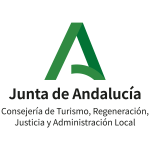Open from Monday to Friday 8:00 a 13:00h
This house from the 19th century is located in what was once the ‘Camino de Jaén’; one of the main gateways to the town, specifically the general Madrid-Cádiz road, which linked with the ancient Castle of Bailén. Forming part of what is now a tradition in the town, the road where this building is situated has changed its name several times. It was once known as ‘Camino’ (Road) and became Calle Jaen (literally, Jaen Street), it has also been called Calle Plaza (Square Street) to emphasise the opening of the road with its proximity to the Plaza de la Constitucion (formerly Plaza del Rey), and finally obtaining the name it is known as today: Calle Héroes de Bailén
Without a doubt, it is possible to take a journey back in time when we reach this spot and imagine the movement of people and goods along this road, which would be on a huge scale when you see the sheer number of houses around this route, many of them built using the stones from the town’s ancient walls.
One noteworthy building is what was named ‘Casa de la Cultura’ (House of Culture) in 1987 by Cristóbal López Carvajal; President of the Council, together with various provincial and local authorities.
It was used as a family home during the first quarter of the 20th century by its owner Don Juan Gracia Alonso, who was Mayor of Bailén at that time. In 1971, he decided to preserve the facade of what was once the Ducal Palace of the Ponce de León inside this house, after the fortress was dismantled stone by stone and moved to Calle de Nuestro Padre Jesús.
Finally, in 1984, the Town Council decided to buy the property due to its proximity to the Town Hall and given the need for space to accommodate the Municipal Library and other municipal facilities. The building was renovated, preserving its initial structure which is where we can find the Library, the Exhibition room and the Events room, while adjacent buildings integrated into the main building house the Municipal Music School, the Reina Sofia Elementary Conservatory, the Municipal Gym, and the Headquarters of the ‘Amas de Casa de Bailén’ (Homemakers of Bailén), thereby resulting in Bailén’s Cultural Centre.
Actividad financiada por:
